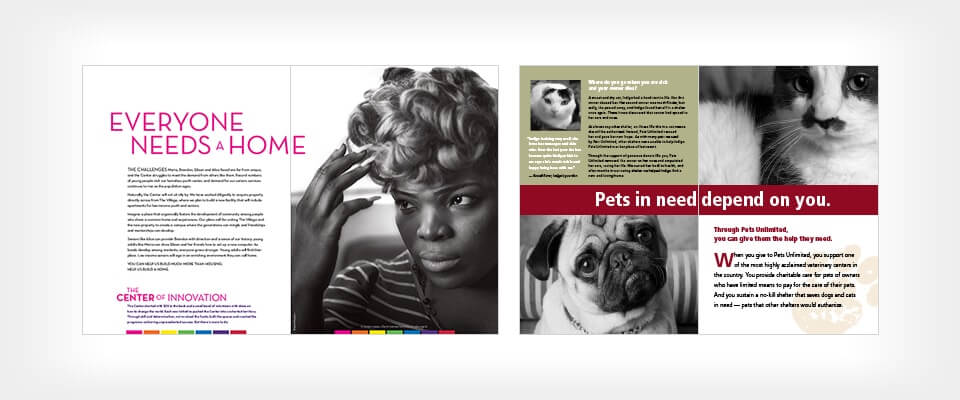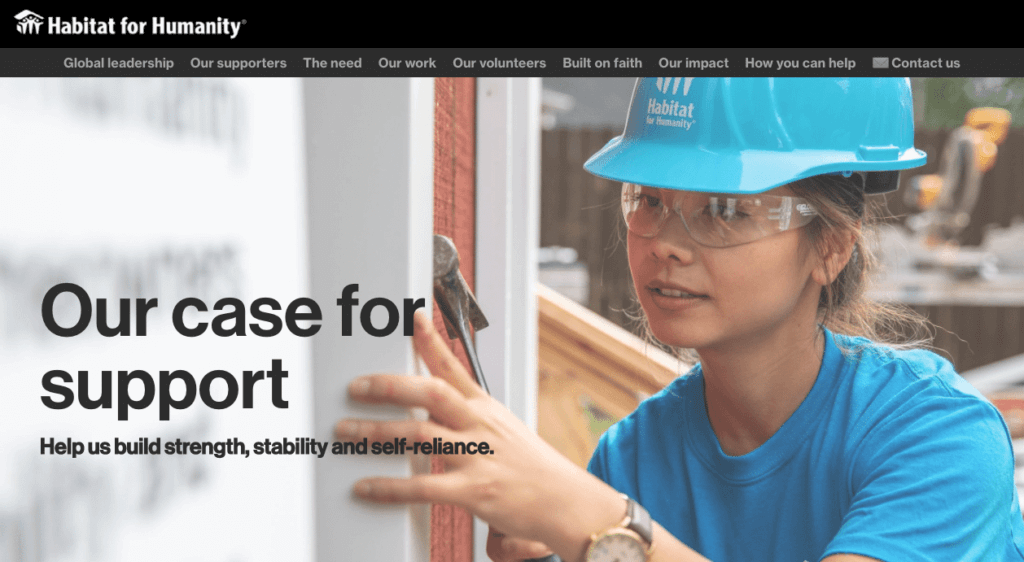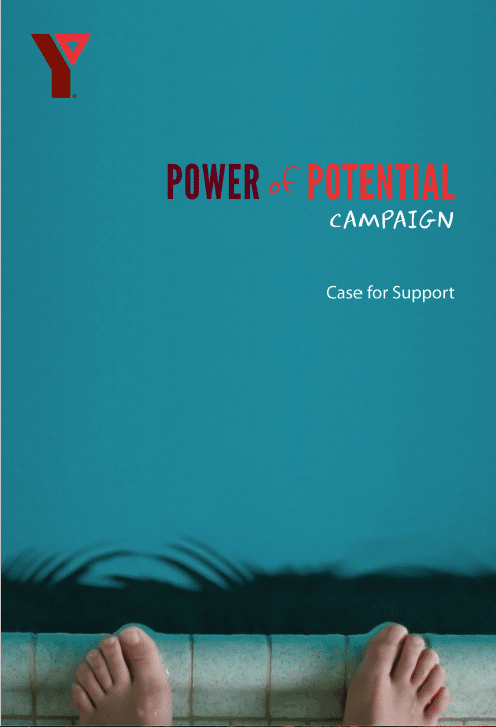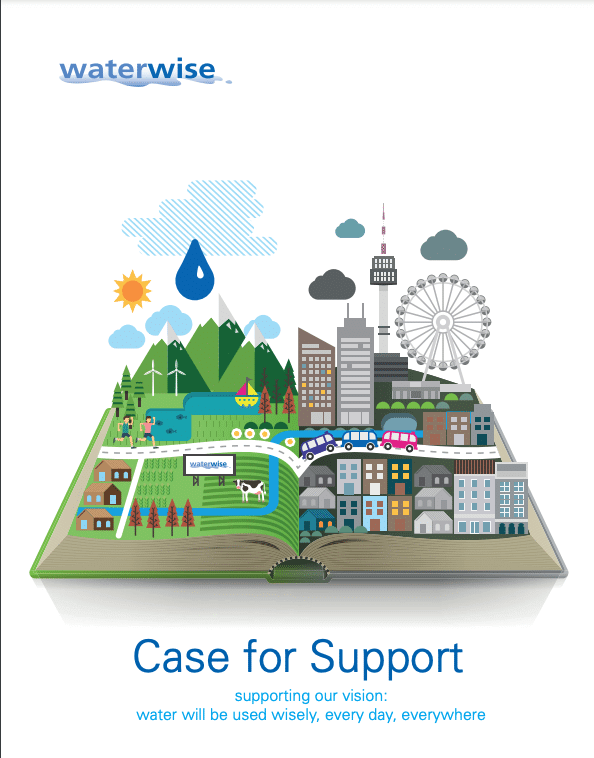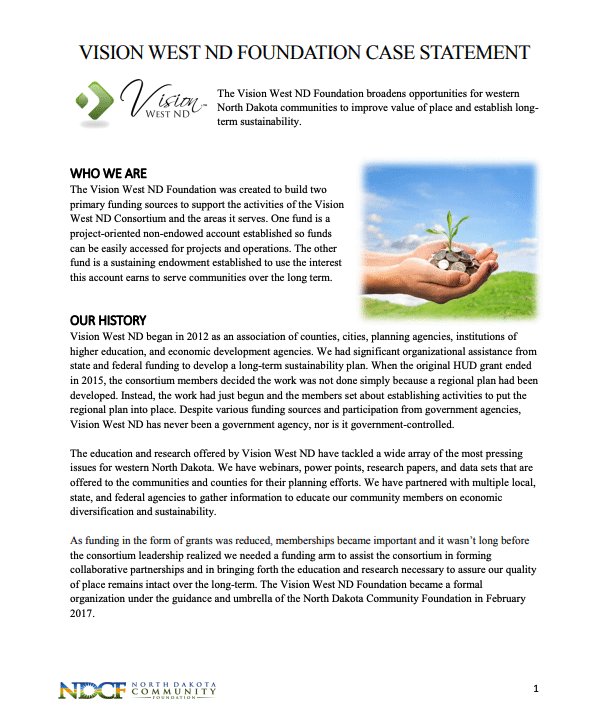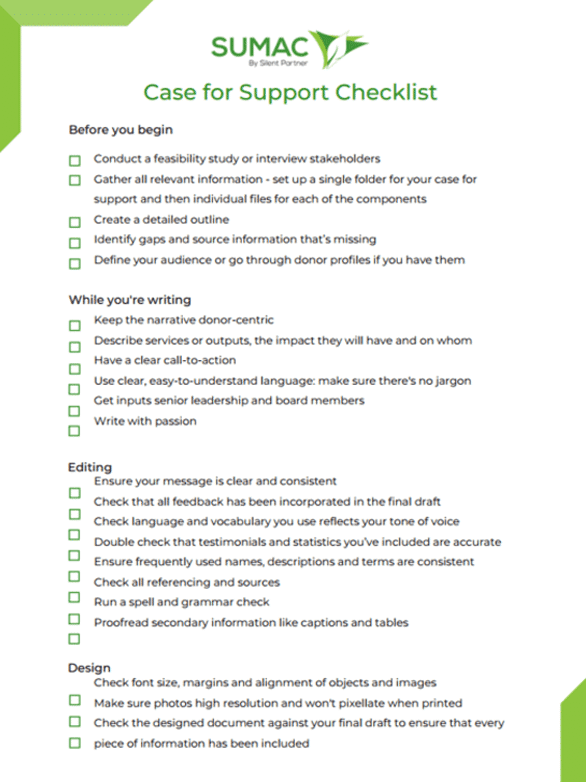Why do you need a nonprofit case for support?
A case for support is one of the most important documents you will create for your nonprofit. It explains what your nonprofit does, why it’s important and, most importantly, why people should support you.
Your case for support will serve as the foundation for all fundraising communications including mid-level giving, planned giving, major giving, grant proposals, and is an essential component of any capital campaign.
Apart from this, your case for support can be used as a reference to create other fundraising program materials like donor newsletters, appeal letters, emails and website content.
While small nonprofits will only need one case for support template, larger nonprofit organizations might need to create multiple case for support documents to support different programs, campaigns, or geographies.
Capital campaign case for support
Capital campaign case for support statements rally everyone around a flagship campaign, and can be essential to its success.
Unlike a more general statement, a capital campaign case for support is focused on a particular campaign and outlines the need to fulfill a specific goal within a limited time period.
While planning your next campaign, make sure you set aside time to edit or update your capital campaign case for support. You might also want to create one tailored to your campaign. Your capital campaign case for support can then act as a base for all other fundraising program material, including letters, event collateral, brochures and posters.
Learn more about planning your capital campaign case for support statements in our complete guide to capital campaigns or take a look at some capital campaign case for support examples in the section below.
Nonprofit case for support examples
Here are 5 case for support examples from different nonprofit organizations. We’ve included both general as well as capital campaign case for support examples. Read through them to get inspired and learn how other nonprofits write theirs.
1. Case for support design example: Habitat for Humanity
Habitat for Humanity’s case for support statement is a great example of how one document can be used for different purposes – like website content and a printable PDF.
While content remains the same, the website uses a scrolling format to take you through different aspects of the organization and includes videos to tell their story.
The print version is shorter and includes prominent visuals. Notice the compelling case they make through the use of very simple language, eg. ‘Help us build strength, stability and self-reliance.’
2. Capital campaign case for support example: YMCA
The YMCA has a unique title for their capital campaign case for support – Power of Potential. This helps them stand out from hundreds of other documents a major gift donor might receive.
They begin by stating their goal ($30 million), and choose to have testimonials right at the beginning, playing around with the structure in an interesting way.
Their case for support is also quite long at 32 pages – but notice the design includes a lot of full page images and white space to make for easy reading.
3. UK charity case for support example: Waterwise
This charity’s case for support example uses icons and infographics to illustrate their point. While section headings are generic (‘Our plans for the future,’ ‘Who do we help’), its simplicity makes it easy for donors to find the information they’re looking for.
At just 7 pages, Waterwise covers all major sections without expecting donors to invest a lot of time understanding their work, making it an ideal document to share at a first meeting.
4. Museum case for support example: Canadian Canoe Museum
This case for support is focused on a single campaign: building a new facility for the museum. Note how they highlight the need for a new museum and then tie it back to their larger mission and vision.
They’ve also included plans and drawings of the potential museum to enable donors to see the outcome of their contribution.
5. Example of a case for support that needs improvement
Here’s a case statement that was created a few years ago and needs some improvement. It is heavily worded, with not many images, and too many fonts. There are no images of the community served and it also includes an appendix with information that may not inspire donors to give. Compare this with the examples above and think about what can be improved here!
Case for support template
Download this case for support template below to get started now. We’ve included some helpful prompts and questions to answer while filling out each section.
Click here to download your sample case for support template!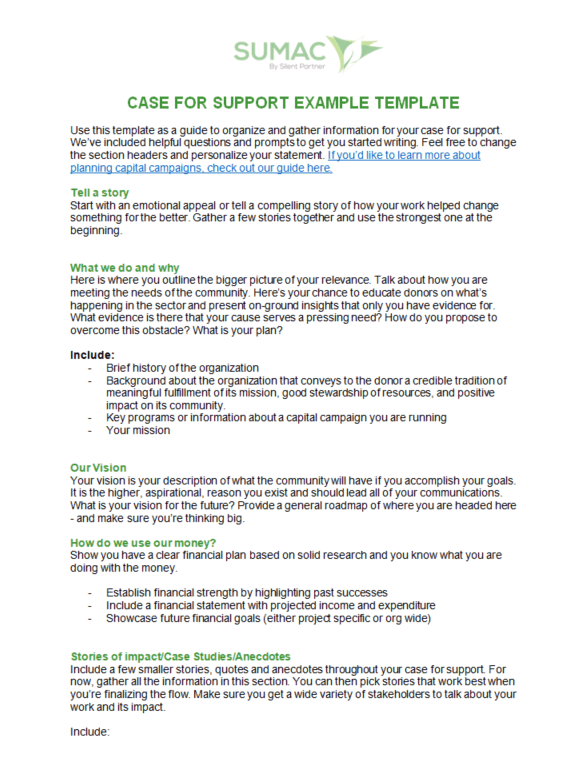
Preparing to write your nonprofit case for support
Writing your nonprofit case for support can feel like a daunting task, so breaking it up into sections can make it more manageable and help you stay on track. There are many things to consider before you begin, here are a few:
1. Consider a feasibility or planning study
These studies consist of multiple interviews and discussions with stakeholders to find out what they believe is important.
This can help uncover missed funding priorities and determine a community’s appetite for supporting your mission. Feasibility studies can be expensive since they require third-party experts to conduct, but if you’re not working on a capital campaign case for support or simply don’t have the budget, you could interview a few trusted donors or volunteers instead.
2. Gather and organize information about your organization
This is the time to go through current funding priorities, historical data, mission and vision statements, future plans and anything else that will help you to write. Once you’ve gathered all your data, start organizing it into sections and develop an overall structure – we’ve got a sample structure you can use below!
3. Create a comprehensive outline
Once your data is organized into relevant sections, start working on an outline. While you do this you may want to consider different ways to structure the document and change things around to suit your needs. You might also want to add information to the case for support that wasn’t in your initial structure. This is why it’s a good idea to collect as much information as possible during the gathering stage – it will help you find data easily when you need it!
4. Commit to a reasonable deadline
A nonprofit case for support can sometimes feel overwhelming in its scope. But don’t work on it for more than 1-3 months. Remember that it’s meant to help you raise funds and will be useless (and possibly outdated) if it takes more than 6 months to develop. Instead, make sure you schedule regular revisions and update your statement annually.
5. Structure of an effective nonprofit case for support
Once you’ve interviewed stakeholders and gathered all the information, you’ll need to begin structuring your document. Following a structure is helpful to make sure you haven’t missed anything important, but once you’ve created a sample case for support structure, feel free to move things around and make it your own.
6. Begin with an emotional appeal
An emotional opening is key to a successful case for support. Make sure the beginning is emotionally charged and inspires donors to give. Start with a story that draws the reader in and highlights the challenges your beneficiaries face. The first few sentences of your nonprofit case for support will decide whether prospective donors read the rest of the document.
7. Highlight your vision for the future
Once you’ve told a story, it’s time to talk about your vision for the future and how you will solve this problem. Here is where you answer the question of ‘Why’: why your nonprofit exists, why this problem is an important one, and why people should care. Make sure your vision is a bold one that excites donors and makes them feel like their contributions would make this possible.
8. Connect your vision to your work
Here’s where you talk about your programs and how you are working to solve this problem. Include programs you are currently running as well as plans for future initiatives. Write a short explanation of the program, how you work and highlight outcomes.
9. Prove you’re making a difference
Now you’ll want to show donors what their support can achieve. Your case for support needs to demonstrate that your programs are worthy of investment. Use statistics and charts, write a few short case studies to illustrate impact, and include testimonials from your donors, community leaders, and beneficiaries.
10. End with a call to action
At the end, you’ll need to talk about the financials and invite donors to support your work. Clearly state your financial goals (if you’re writing a capital campaign case for support then state the campaign goal), as well as your long-term growth plan. Make a specific ask so donors will know what to do next.
Tips for writing a nonprofit case for support
Now that you’ve looked at a few case for support examples, here are some tips for writing your own!
1. Make your case donor-centric
Write with your donors in mind. Think of them as the heroes of your story and make sure you’re writing from their perspective. Talk about what they’d want to read rather than what you want to say.
2. Write in clear, easy-to-understand language
Don’t include technical terms or jargon as that might confuse donors and hide compelling storylines behind complex vocabulary. Making it as easy to read as possible also makes it clear to donors why you need their support.
3. Write with passion
While the opening paragraph should make readers feel deeply for your cause and draw them into your story, don’t let it stop there! Your passion should run through the whole case statement so make sure you use your best writer to create this narrative and keep it interesting!
4. Think big
Having a small goal might feel like a good idea, but while writing a nonprofit case for support you want to think big. Donors like to know that they are contributing to larger change by doing something small. While small goals are important, make sure you connect them to a larger vision.
5. Make it visually appealing and easy-to-read
Hire a professional designer to work on your case statement. Bad design can make your document unreadable and deter donors from investing. If budgets are tight, make sure you design something that is clean, simple, has lots of white space and images, and the font isn’t too small.
6. Break up your case for support into different sections
Part of making your case for support easier to read is including different sections. Use mission-focused or emotionally appealing headings for each section. It’s a good idea to develop headers specific to your organization (e.g. write ‘One can of water can change many lives’ instead of ‘Our funding needs’).
7. Avoid using multiple people to write different sections
While collaborating with multiple teams initially is important, once you have a working case for support template, hand it over to a writer or editor who will bring it together for you.
8. Proofread your case for support template at every stage
Proofread sections before they are added to the larger document and once your sample case for support is ready. Make sure team members who haven’t worked on the document read it to check for errors.
9. Don’t worry about length
If your nonprofit case for support is longer than 10 pages don’t try to cut it down. Instead treat it as a foundational resource from which to develop other documents like donor appeals and fundraising letters. Having all your key information in one resource is important – you might remove important information in an effort to meet a page limit while developing a case.
10. Get buy-in from leadership and board members
The content in your nonprofit case for support must be developed in collaboration with multiple teams as well as senior leadership. Board members and leaders need to ensure that the vision and mission of the organization is clearly communicated and understood by all. You may want to host a meeting to discuss the structure of your case for support and plan another one to review the final draft.
11. Edit, improve, iterate
Once your nonprofit case for support is complete, get internal and external feedback, but be careful about getting stuck in an endless feedback loop. Set aside time either quarterly or annually to review your case for support template and make sure it’s up-to-date. Regularly share iterations with staff to get their feedback and ideas.
Creating effective cases requires a strategic plan and drafting, designing, and editing from a number of staff as well as board members.
If you’ve done it right, everyone should be familiar with your case for support at the end. Don’t jump ahead and skip feedback steps since you’ll just create more work later. While it is a lot of work, writing your first case for support template is also exciting. You’re beginning a process that will solidify your ideas and plans, create value in your community and raise money to further your mission in the years to come.
Once your case for support is done and you’re ready to start fundraising, you might want to consider upgrading to a better nonprofit CRM to help you manage your donors and easily track campaign goals.
